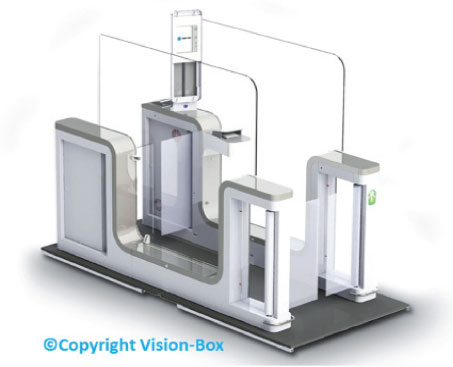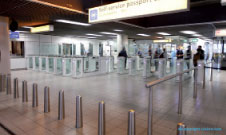
Leitmann: “By offering different biometrics validation options, border police and airports can choose the ones that best fit their needs and requirements, and answer to existing policies.”
Having been deployed in March, the new eGates at Amsterdam Airport Schiphol successfully processed more than 100,000 passengers in the first two months of operation. The eGates rely on facial recognition technology that is used to identify the passenger. The captured image is compared to the photo on the passenger’s e-passport and if the information matches, the gate automatically opens for the passenger to pass border control. If the information doesn’t match, the passenger is referred on to an immigration officer, who will undertake a traditional manual check. “The check made by the machine is the same as the check that is done by one of our officers,” explained Robert van Kapel of Royal Marechaussee (Royal Dutch Border Police). “If one of our officers thinks there should be an extra check, for example made by interview, they will act.”
Customisable solution

In the first two months of operation, the automated border control eGates at Amsterdam Airport Schiphol successfully processed more than 100,000 passengers.
The installation of the automated border control eGates is the result of a joint project between Vision-Box, Accenture and Capgemini, with the former supplying the vb i-match multi-modal ABC eGates, which have been developed to support iris, fingerprint and facial recognition validation. As well as the implementation in Amsterdam, Vision-Box also has a presence at more than 30 other international airports, including the likes of London Gatwick and Helsinki-Vantaa.
Miguel Leitmann, Senior Vice President, Vision-Box, said: “By offering different biometrics validation options, border police and airports can choose the ones that best fit their needs and requirements, and answer to existing policies.”
In addition to the security benefits that the eGates bring, Leitmann also highlighted the benefits that the system offers in terms of expediting the overall immigration process.
“eGates standardise the border clearance workflow, making it predictable and freeing border guards for other more valuable tasks,” he said. “This allows for better planning of the time a queue is going to take because the whole process can be timed and generally occurs the same way. Today, the passage time in our gates has been trimmed down and the passport validation and facial recognition are done simultaneously, reducing the passage time. The work done at the usability level has also contributed to a better understanding of how to use the gates, thus also saving precious seconds in the overall process.”
Although the installation of the eGates at Amsterdam Airport Schiphol is only a few months old, van Kapel stated that Royal Marechaussee is pleased with the performance of the system to date. He said: “We are very happy with the results so far and hope this fast, efficient and safe way of border control will roll out further in the future.”







